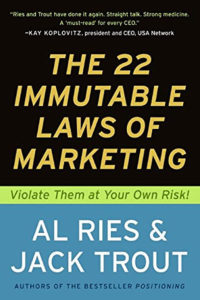

If you want to specialize your business, this space will provide you with that path. Today’s guest is John Rougeux, an executive member at Pavilion and a partner at Category Design Advisors. From the failures to their success story, John brings us into the domain of category design and what they do in the market to help others become a dominant player. He also explains why CD matters and why its go-to market relies on word of mouth and referrals. Get to see how category design evolves in their space when you tune in to this episode. Don’t miss it!
—
Listen to the podcast here
A Marketing Leader’s Journey In Category Design With John Rougeux
In this episode, I have another great guest and a conversation that’s coming up. I have with me John Rougeux who is the Partner at Category Design Advisors. Welcome to the show, John.
Thanks for having me, Vijay.
This is a go-to-market show and this is what it is all about so let’s start with that topic. How do you view and define the go-to-market?
I’ve always used a pretty simple definition. It’s the set of activities that you’re doing to get customers aware and excited about what you’re doing and turn that excitement into revenue.
That’s already a straightforward definition and view. I’m looking at your LinkedIn. You have been a marketing practitioner. You led and built marketing teams. In your capacity, you are working with various companies of all sizes. How do your clients perceive the go-to-market?
For some context, the types of clients that we work with tend to be ambitious startups. They’re companies that are either defining a new space for building a new category of themselves or participating in an emerging category where there’s no clear leader yet. They’re trying to improve their odds of dominating that space and being the go-to solution.
With that context in mind, a lot of what our customers have to do is educate the market on what they are doing, what problem they’re solving, why that problem needs to be solved, and what happens if it’s not solved. Use that as a wedge to then talk about their solution, why that matters, and why it’s categorically different from other things that buyers might have encountered already. It’s much different from a straight comparison type of situation where you stack up a bunch of features next to each other, specifications, or even pricing models. We’re talking about going deeper than that and talking about fundamental differences.
That’s one of the reasons why I’m super excited about this conversation. More often than not, especially when we talk about the go-to-market, the guests that I’ve had so far are like, “The founders are the go-to-market practitioners.” It’s typically around the go-to-market execution engine versus where you and I will be taking this conversation. We’re out to lean on you for your expertise and perspective is how to think about a category and how these go-to-market themes and go-to-market leaders can start thinking about category creation and enhancing their position in the category.
One of the myths that we try to bust is category design always means creating a brand-new category and being the first company to do that. Categories have a life cycle. They evolve. We’ve leaned on a lot of work by an author called Paul Geroski, who wrote a book happily titled The Evolution of New Markets, where he goes in-depth about this idea of categories evolving.

I want to explain that and that’ll provide a good lens for thinking about how companies should compete in a category and what their category strategy should be. The research that Paul Geroski did follows as such. Before the category exists, what you have is an unsolved problem that exists in the world. Problems have to be experienced by people for them to be a real thing. You’ve got a group of people who are dealing with some problems and there’s no good solution for that.
Sometimes, this situation persists indefinitely. There’s a solution to these problems where we’ll never have a solution. That doesn’t constitute a category. It’s just a market opportunity if you like. What typically happens, though, is something will change. Maybe a new technology comes about or the problem gets worse enough to where people identify that it’s worth solving. Someone has an insight. They say, “I can build a solution that addresses this issue.” That’s when a startup is born or maybe a new venture within an existing company.
If that inside is valid, then you’ll typically see other companies latch onto that idea. They’ll come up with their attempt to develop a solution for that problem and group of people. In the early days, those solutions may look very different. One company solution might be viable and another company solution might not but they’re trying to experiment and get to a place where they’ve landed on the right solution for that issue.
As that process progresses, typically, what happens, as Geroski taught us, is one company has convinced the market that its design is the best suited for that problem. It’s what he calls the dominant design. When that happens, two interesting things happen next. One is that when customers see that there’s a go-to solution for this thing. They feel a lot more comfortable buying. You start to move from early adopters to more mainstream audiences because people don’t want to risk buying something that’s going to be obsolete, incompatible, or doesn’t work right. When they see that there’s a standardized solution, those barriers come down and the purchase becomes a lot less risky.
When that happens, the company that’s established that dominant design tends to dominate that space. The other players in that market have to either come along with that or exit the category. When that dominant player comes into play, the market cap of the category grows and the number of competitors decreases. I’m trying to condense a couple of hundred pages of that idea into a few minutes. We would like to understand where your category is in its evolution. It’s important for you to figure out what kind of strategy you need to set for yourself.
The company that has established that dominant design dominates that space and the other players in that market. Share on X
Thank you for setting the context and the thought process behind the whole concept of category in the first place. Before we dive deeper into this topic, let’s unwind a bit over here. For me, it’s all about understanding why did you decide to go into this space. What motivated you? In that context, if you can share your career story? What led you to what you’re doing?
The quickest way I can describe it is if you’re a marketer and you’re trying to bring a radically new idea to life using the traditional playbook of capturing market share, your life is hard. That was the journey that I experienced. I spent some time at some early-stage startups early in my career. I was a cofounder of one of them. We were solving problems that didn’t exist before and had some different ideas about how to solve them.
We had some initial traction but everything I’d been taught to that point was how you compete against competitors and differentiate yourself but it’s always in the context of other companies. I started to explore other ways of going about marketing. That led me to business strategy and then discover category design as the framework for bringing new things out to the market.
You did leave an equally exciting part of your journey, which is your backpacker way back. What is that like?
My wife and I decided to hike the entire Appalachian Trail together. We had our first anniversary while we were backpacking. It was that early on. It’s about six months of backpacking solid. It was a lot of fun. It’s much more of a mental challenge than a physical one.
You didn’t go into the tech industry right away but eventually, after a couple of roles, you did move and take the industry and marketing function. You were a CMO. You were a host on the B2B Growth Show. I was not aware of this. I’m an avid listener. That’s fantastic. You went into a marketing leadership role and also were building a marketing strategy at BombBomb, which is similar to video marketing or video sales tools. It falls somewhere in that category.
The broad space is like video messaging. You put a label on it.
Here you are at Category Design Advisors. You did share that journey. What prompted you to make that radical shift? You did touch upon that. In a nutshell, you did mention what you’re doing and how we were taught what you need to do as a marketing leader. It was not paying off or did not die in the right way. Expand on that. That’s a very critical insight that we should dive into.
To go into that a little bit deeper, I didn’t find any good framework for taking something that people aren’t familiar with at all and don’t have any context for. We’re talking to them about that in a way that matters to them and shows why this new business needs to exist. A lot of what I was learning at the time was very tactical, like how to get more traffic to your blog, how you optimize an ad campaign or conversion rate on a landing page, or what the best practices for marketing automation are, tactics that are good but can only move the needle so far if you don’t have the fundamentals correct.
In one of the businesses that I worked for, we were developing a way for local businesses to generate word of mouth on social media. This is in the early 2010s when social media was in a different state than it is in the present. Looking back, I realized that a lot of our customers came through word of mouth and opportunities where we could be on the stage or a show and share the narrative and the story behind what we were trying to do.
One of my cofounders built a product for himself. He was addressing an issue that he faced. Other businesses latched on to that because they were going through a similar situation. When we removed that ability to tell that story and convey that narrative, it was very difficult for us to drive business. That puts a cap on our growth because all those tactics I describe like the conversion rate, optimization, this and that, and the other, don’t address the real issue. I was curious. I said, “How did people go about building businesses before digital marketing?” You couldn’t use paid social and things like that.
When we remove our ability to tell that story and convey that narrative, it's difficult for us to drive business and it puts a cap on our growth. Share on XOne of the books I encountered in the process was The 22 Immutable Laws of Marketing by Jack Trout and Positioning by the same authors. Law number one is to be first in the category. Number two is if you can’t be first, set up a new category that you can be first in. That idea was foreign to me. I was talking to a friend of mine, James Carbary. He runs Sweet Fish Media, the company that runs B2B Growth. He said, “If you like that idea, you should check out this book. It’s called Play Bigger.”

This is about 2017 or so. The book was only about a year old at that point. When I read that book, I immediately knew that if I had this framework a few years ago, it would have dramatically changed our trajectory and our ability to grow the business. From there, I started to apply this thinking within the companies where I was working. I did some things that worked. I learned some things that didn’t work and made some mistakes because this was a very new discipline at the time.
What I realized though was I enjoyed the discipline. I started doing some consulting on the side and helping some early-stage founders through the process and found that I was adding some value and wanted to work towards doing this work full-time. I developed a relationship with Christopher Lochhead. He’s been a great mentor of mine. I ended up getting to know my partners at CDA and we started working together full-time.
Play Bigger is one of those books especially for founders and go-to-market leaders who are thinking about building big markets and number one position in the industry. Play Bigger is a must-read for those people. You read the book. Essentially, you connected with that mindset and the principles that are stated in that book. You were a mentor and in touch with Christopher Lochhead, who is one of the co-authors.
When I started the B2B Growth Show, it was my friend James. He challenged me. He said, “John, I know you know very little about category design. Go start a series on my show about it.” He was the first person to interview Christopher Lochhead.
What is the hook? How did you manage to get Christopher on the show?
I asked him just like you asked me.
Let’s get deeper into what is CDA. What do you folks do? What is your go-to-market?
Our go-to-market is pretty reliant on word of mouth and referrals. Frankly, it’s different than probably how our customers operate but we’re pretty selective on the number of clients that we work with in a given year. We’ve done closing on 45 engagements with companies over the years. We’ll do 6 or 8 a year around networks and the content we’re producing. Kevin, the co-author of Play Bigger, brings a lot of credibility and interest to what we’re doing. It’s not super complicated. Build relationships with good people, produce content that adds value to people, and the rest pretty much follow suit.
I’m on the website. I was looking at projects and engagements that you do with these companies. It’s very impressive. You folks work from early-stage startups to pre-IPO and even companies that are public enterprises. As a startup, it’s a big panda. That’s one of the case studies that you have in there. Your pre-IPO is Sprinklr, and then companies that are big and large like LinkedIn. It’s a very impressive roster. For each of those stages, what is the need? What is driving them to engage you folks in their go-to-market?
I mentioned the word ambitious and that’s a good word to capture how our clients are acting. If you think about athletes in the Olympics and they’re 4th or 5th in the world, their goal is to be that gold medalist. They will invest every resource they have to make that happen. That’s how our clients are thinking there. They have their ambitions set on not just bringing something new to life and establishing a new space but dominating that space and emerging as the equivalent of the Salesforce as that space matures. That’s why they’re bringing us in to help them realize that goal and improve the odds of being that dominant player.
When you talk about category design and when I start reading more into the concepts on Play Bigger, the first story that all of us, including the readers can relate to is, what Marc Benioff did with Salesforce. That was a huge eye-opener. For the benefit of those readers who are not aware of the story, which should be the minority of this, Marc Benioff came out from Oracle and Sable in the CRM space. He realized, “All of those were perpetual licenses versus why should anyone even own a license. Kill the software concept and have software releases and improvements daily word. You don’t have to worry about the maintenance of the software as such.”
We take it for granted that that’s the normal way of doing things. At the time, I remember the Wall Street analysts didn’t even know how to value their revenue because it was all this recurring revenue model, which was foreign to them.
He’s shifted how all the software companies have to think about and go-to-market with this new concept and business model. That’s a classic example. For the readers who are not aware of category design, connect with the story of what Marc Benioff did with Salesforce. That’s the entry point. Thank you for sharing that context.
It was super helpful to why category matters and coming back to the keyword that you mentioned, how the ambitious founders and go-to-market leaders should think about and why they should pursue category design or category creation. With that as a context, it’ll be helpful if you can share with our readers a go-to-market success story and failure story around the category.
The way that I’ll describe it won’t be around the go-to-market mechanics and the things that a CRO or a CMO might cover. The way we look at it is if you get your fundamentals around your category straight as you write, then whatever go-to-market engine you build has a much greater chance of being successful. Whereas if you have some misses on your category strategy, then you might have the most finely tuned GTM engine in the world but it’s not going to get you where you need to go.
Why don’t I start with a failure first because that makes success a little easier to describe? One of the things that we try to look at when we help a client develop their category strategy is focusing on the problem that they’re solving and making sure that it’s a valid problem, the problem causes enough pain, and enough people are experiencing it. In other words, it needs to be a problem worth solving.
That sounds obvious. Why would you build a company around a problem that you hadn’t validated? This happens all the time. I’ll share a pretty high-profile example. There was a company called Quibi. They made a valid observation initially. It was that people were consuming more media on their phones while they were on the go. That’s a valid insight. They took that idea and built a whole company around this notion, like a mobile-first video platform.
In case you’re not familiar with them, the idea was that they would create original content. The content would be very suited to this on-the-go-on-my-phone type of behavior. Episodes were about ten minutes long. They had this interesting technology where you could rotate the phone and the video would look good in portrait or landscape mode.
They have some smart people. Jeffrey Katzenberg and Meg Whitman were two of their big investors or board members. They raised $3,750,000,000. They had a huge marketing campaign. Retrospect is so easy to see but the miss was that there was already a pretty good solution to the problem identified and it’s called TikTok and YouTube. They weren’t providing enough of an incremental benefit to be worth paying a whole other subscription to. On top of that, I’ve heard their content was pretty bad so that didn’t help but even if their content was decent, they would have run into all the same issues.
The company folded within a year and a half of being launched. This is a great example of a company not understanding that this category of mobile or first video platforms was already pretty well established. There were already some pretty good options there. They’re trying to come in, redefine that, and dominate in a way that didn’t provide orders of magnitude of benefits. It’s a losing proposition. No amount of money, advertising, or marketing could save them.
That’s a failure. I can share a success. It’s one I didn’t work on myself. I don’t want to take credit for it but my partners Dampen and Kevin did. They work with a company called Sprinklr. For some background, Sprinklr broadly plays in the customer experience space. There are already some established players there. Call tricks are one. The way they are perceived in the market was they were another me-too customer experience tool, of which there were dozens.
At the same time, their CEO knew that they had something different and they were building something special but the market couldn’t see that. We have a term for that. We call it Category Jail. It’s when the market misses mentally and miscategorizes what you do. What they did was use the category design process to build a narrative that captured what they were doing as categorically different and set the stage for them to build on a different trajectory going forward.
They call it unified Customer Experience Management or unified CXM. It was more than just a label, though. It was a way to identify all the problems that happen when you use a hodgepodge of point solutions and try to cobble them together. There are all sorts of gaps that still happen in the customer experience when you do that. That was an aspect of the problem they honed in on.
They went through that exercise right before their IPO. When they did that, it changed the way that investors perceived them. It went from a me-too solution to, “This is something different.” They not only have a different take on what they’re doing but the opportunity is much greater because this isn’t just another set of point tools. Their IPO is successful.
They’re a multibillion-dollar company. Making that IPO successful for them was key. That’s an example of the end stage. That same process still unfolds whether you’re at series C or even if you’re very early on. If investors don’t see why you matter, they miscategorize what you’re doing. They’re either not going to invest or undervalue you, and you want to get the valuation you deserve.
That’s a great story, for sure, especially the term. Customer experience management is so overly used. A lot of the CRM companies are positioning themselves as CXMs. The cool story about Sprinklr positions itself as CXM but it looks like a niche within a unified CXM. That’s what sets them apart. Once the market and the investors see the story and see them as a player in a much bigger or different category than the existing players, the valuation will go up, and that will show up in their stock price.
The takeaway is that when you do category design well, you are controlling the narrative. You’re not using a narrative set by somebody else or building your narrative around points of comparison to other tools.
Two questions that come to my mind from that success story. At what point in time is it right for the founders and the leadership team to think about category creation and category design?
The answer is day zero. What the process looks like for a very early-stage company, a couple of guys in a credit card versus pre-IPO, is different. We did an interview with Craig Rosenberg on Scale Venture Partners on our show. This is one of the things we were talking about. When you’re in the formation stages of the company, picking a problem that no one else has addressed or a radically different approach to a problem that is far different from the status quo is very powerful in terms of creating a business that can do something meaningful and can get people excited about them.
When I say the process looks different, there’s a lot more conviction you have toward the tail end around what that solution looks like and what partnerships and the whole ecosystem might look like. You’re putting those thoughts into stone at that point and pushing hard into the market about specific language you’ve built and specific aspects of what this category needs to look like.
When you’re early on, you have some hypotheses around this problem. You’re trying to validate your ideas as quickly as possible. You might have a good handle on the problem. Your solution might be wrong and you’ve got to iterate on that. You’re more like writing in pencil but still going through the process and thinking about the problem first and the solution second is something every early-stage company should be doing in my mind.
It’s easier said than done. In the early days, the founders and investors were all like, “How quickly can we get from problem validation to product market fit?” The path that they take to get to that point may not necessarily be thinking about category creation or educating a market about a new category or product that they should invest in and buy at this point.
If you do it right and you can show people that there’s a problem that hasn’t been sold, that’s a very powerful way to gain traction. The other path you have to take is you’re competing in a space that’s already established. You’re trying to come up with a better, cheaper, or faster solution or maybe have a niche that you can serve better than someone else. I’m not saying you can’t do that but that’s not an easy path either.
If you do what you're doing right and show people there's a problem that hasn't been sold, that's a powerful way to gain traction. Share on XThe second question that came to my mind when you were sharing the GTM success story is slightly controversial but interesting. I’m sure it must have been debated a whole lot. There were mobile phones even before Apple came out with their iPhones. It was an established market and category. What did they do? Everyone knows what they did. They didn’t have to create a new category but they’re leaders by a far distance in the smartphone category.
Do you remember when we were talking about the evolution of categories and had played over time? At that point in time, the dominant design was the Blackberry. The Blackberry was more geared toward business users. It wasn’t something that your grandma would buy. There was still this unmet need of people wanting to browse the internet and people wanting to listen to music on their mobile devices to make phone calls and texts on a single device. The Blackberry wasn’t suited for that for the market at large. It was a good dominant design for that niche business user space but it didn’t address what the broader world needed.

Apple was a genius at understanding the problems that people had with the way Blackberry worked and traditional mobile phones or things they couldn’t do. They use that to inform what this new design or this new take on a smartphone should look like. As you know, that is established as the dominant design. Even if you have an Android phone, it still has a similar industrial design. It still has an app store, which is a key component of that dominant design. It still works and feels the same way as an iPhone.
The main takeaway is the point that you mentioned early on, which is the category evolution. Apple was the first player in that category evolution like step zero. They created a whole new bump in the category. It’s just not the business users of the Blackberry users. Now, it’s a much larger market. They’ve expanded the market a whole lot and they are one leader.
They didn’t create this smartphone category but they designed it in their favor and expanded what that category represented into something much larger.
I appreciate the insights and the thought process around category design, category creation, and category evolution. Switching gears, coming back to more of the story behind John. What are 1 or 2 skills you are known for in the industry of the market? When someone thinks, “I’m struggling with design. I need somebody to talk about this so I should reach out to John,” what are those 1 or 2 topics that people reach out to you for?
As category designers, what we tend to be good at is critical thinking and assessing things more objectively. I’ve run into this challenge myself. It’s very easy to lose sight of the forest for the trees when you’re in a startup or even any company. When you’re so close to it, you can’t see things objectively. Our ability to look at things dispassionately and assess what needs to happen from a business perspective is something that we find tuned pretty well over time.
It's easy to lose sight of the forest for the trees when you're in a startup. Share on X
Instead of talking about me, let me talk about one of my partners, Kevin Maney. He’s arguably one of the best people in the world at articulating difficult-to-explain technology in a way that everybody can understand. Jeff Bezos used to even call on Kevin to help him unpack some ideas he was thinking about. I’m lucky to work with someone like him.
It’s not very often that many people get a chance to work with such industry thought leaders or category creators in this case. I’m sure you must be excited and grateful to be working with Kevin and others at CDA.
It’s a good group. There’s a lot of fun.
The other question that keeps coming up is, what are the resources or the exciting topics that you research or lean on? You mentioned the fact that you host a podcast. You must be listening to other podcasts and reading books, I’m sure. What are the other resources that you lean on or people you lean on?
I read a lot of things that are not pure marketing or pure business books because I like to get inspiration from unexpected places. One of the books that I’ve read a couple of times is called The 33 Strategies of War by Robert Greene. It’s pretty dense. It’s not like a bedtime story or anything. He uses a lot of historical examples to talk about how different countries or militaries have engaged with each other. Many times, he explores the dynamics of different competitions, which is useful when you think about businesses and how they interact. That’s one.
We have a community that we started called Category Thinkers. It’s about 600 folks in there who are all thinking about or working on category design in one capacity or another. That’s a great place for us to fuel our thinking as a group. I’d like to share what I’ve learned. I learned things from other people from other corners who are thought of as something I haven’t discovered. That group dynamic and community have been valuable too.
I recall you saying about that community. I did join. If I did not, I’d be part of that. It’s cool to understand. More than coolness but it’s about how other people are thinking about category when it comes to that go-to-market. That’s my perspective and what I’m curious about. We’re going to be part of that. Shout-out to that group. For the readers, join that group.
If you’re not there, let me know when you join. I’ll make sure I say hello to you when you pop in.
The final question I have for you, John, is if you were to turn back the clock, what advice would you give to your younger self on day one of your go-to-market journey?
Look for input from others more readily. One of the mistakes I made was thinking I knew more than I did and not knowing what I didn’t know. You can only discover that by getting perspective and feedback from other people. I would have been even more proactive about reaching out and finding people who were ahead of me or came from different disciplines who could share a perspective that I didn’t have.

Thanks for sharing that. That’s something that I grew up with as well, almost on a daily basis. More often than not, we think that we know and we have to be sure. We are confident. We believe that this is what it is, what my stands are, and what I will be doing. I wish I started earlier in building that personal board of advisors and having them as a sounding board or even giving them the comfort and the luxury of saying, “Vijay, you’re wrong. You’re going to screw up on this.” Creating that space is important. Thank you so much for a wonderful conversation, John. Good luck to you and the team at CDA. We’ll be rooting for your successes.
Thanks for having me, Vijay. It was a real pleasure.
Important Links
- Category Design Advisors
- The Evolution of New Markets
- B2B Growth Show
- BombBomb
- The 22 Immutable Laws of Marketing
- Positioning
- Sweet Fish Media
- Play Bigger
- Christopher Lochhead
- Sprinklr
- Craig Rosenberg – Category Thinkers’ Past Episode
- Kevin Maney
- The 33 Strategies of War
- Category Thinkers
Love the show? Subscribe, rate, review, and share! http://stratyve.com/
